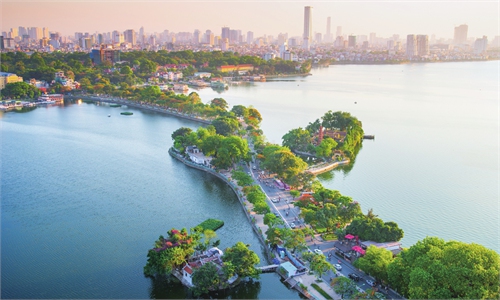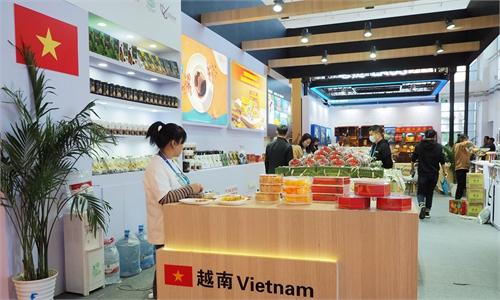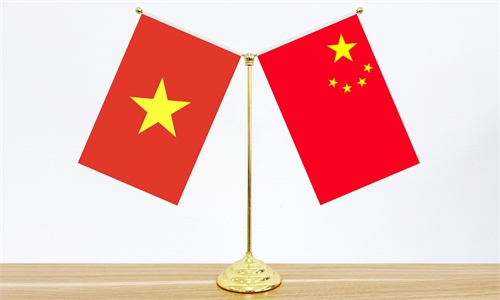China, Vietnam upgrade cross-border land port, boosting cooperation in Southeast Asia
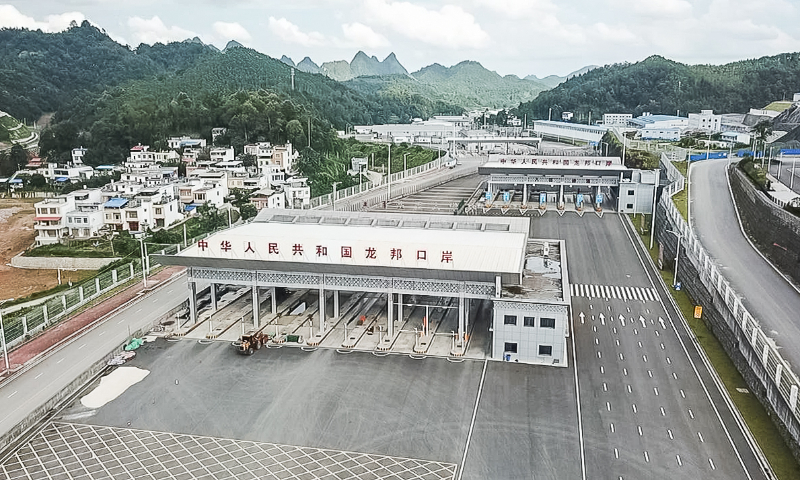
A file photo of Longbang Port in Jingxi, South China's Guangxi Zhuang Autonomous Region. The port is located at the China-Vietnam border. Photo: cnsphoto
An upgraded land port between China and Vietnam officially reopened on Thursday, with several other land ports having resumed operations during the year. Analysts pointed out that the China-Vietnam land port will not only promote bilateral trade, but also facilitate trade within Southeast Asia.
The Longbang (China)-Tra Linh (Vietnam) port, including Naxi (China)-Na Doong (Vietnam) border crossing, reopened to public on Thursday, after being upgraded from a port limited to Chinese and Vietnamese personnel, goods and vehicles to an international port for global exchanges.
Trade ties between China and Vietnam witnessed rapid development in 2023, which promoted the upgrading of the cross-border port. Meanwhile, the building of China-Vietnam community with a shared future has enabled deeper bilateral connection at both economic and technological levels, Zhou Shixin, a research fellow at Shanghai Institutes for International Studies, told the Global Times on Thursday.
"China and Vietnam are economically intertwined neighboring countries. They view each other as vital trade partners and continue to open more ports. With increasingly close economic and trade ties between the two sides, the relationship could also serve to strengthen the trade links between China and the Association of Southeast Asian Nations (ASEAN)," Zhou said.
The newly reopened Longbang Port, which is located in Jingxi, South China's Guangxi Zhuang Autonomous Region, is one of the most accessible land routes connecting China's southwestern region with Vietnam and ASEAN.
In 2023, several China-Vietnam cross-border ports resumed operations and more ports opened to public. On October 17, Tianpeng (China)-Sam Pun (Vietnam) port began official operation.
Prior to this, the first cross-border smart port project between China and Vietnam started construction on September 15 at the border port located at the Youyi Pass, or Friendship Pass, expecting to double the maximum clearance capacity of the port after its completion in 2024.
In addition to the opening of new ports, China and Vietnam also promoted infrastructure connectivity.
One of the latest examples is the operation of a new railway line connecting Guangxi's Dongxing - at the China-Vietnam border - to China's national railway network on Wednesday, which is expected to boost trade and tourism along border areas.
The Fangchenggang-Dongxing Railway started operation on Wednesday, which will make transportation between Guangxi, Vietnam and Southeast Asia more and more convenient. The railway is a dual-purpose line, handling both passenger and freight transportation.
In October, the Vietnamese government approved to have two more international border gates in the province of Lào Cai - both on the Vietnam-China border - opened and upgraded, the Vietnam News Agency reported.
The economies of China and Vietnam serve each other as mutually beneficial and complementary, with China having a significant amount of investment and construction projects in Vietnam. In the future, if a bilateral free trade agreement can be reached, Vietnam could better show its industrial potential while boosting economic and trade cooperation with China, Zhou noted.
As this year marks the 15th anniversary of the China-Vietnam comprehensive strategic cooperative partnership, China-Vietnam bilateral trade has maintained strong growth momentum.
In the first 11 months of 2023, trade volume between China and Vietnam reached 1.45 trillion yuan ($205 billion), up 3.6 percent year-on-year. Bilateral trade accounted for 25 percent of China's total trade with ASEAN, according to data released by the General Administration of Customs.
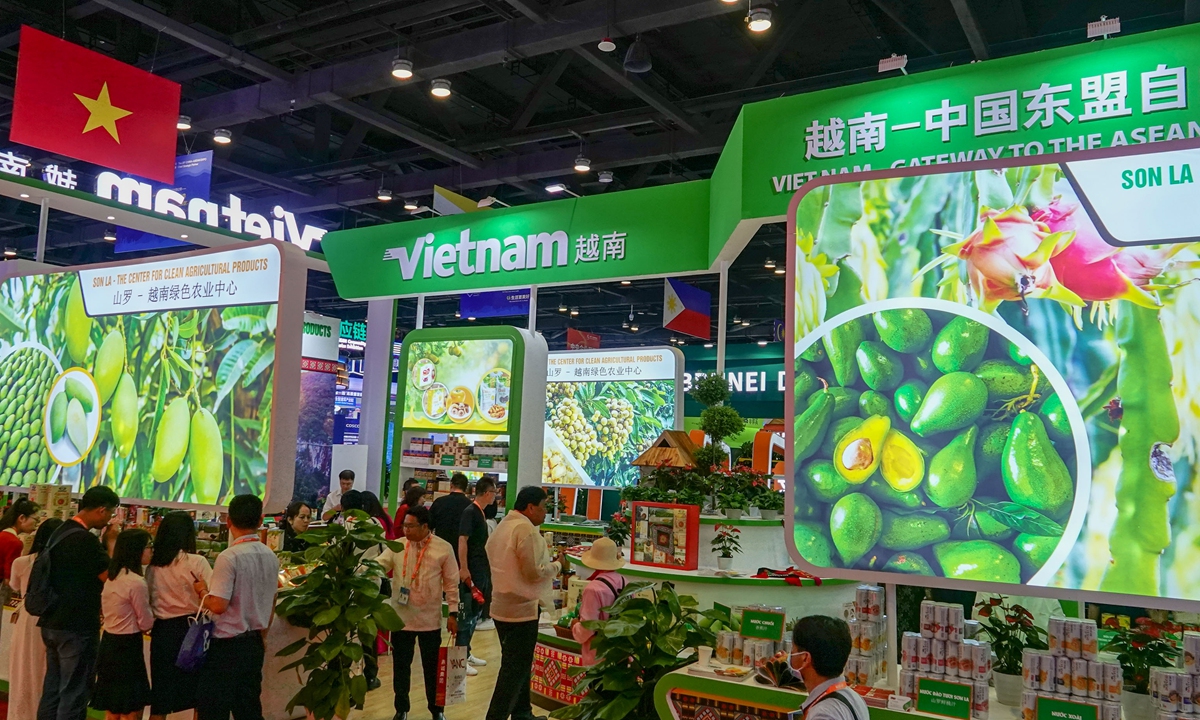
Visitors sample Vietnamese agricultural products at the Vietnam exhibition area at the China-ASEAN Expo, on September 17, 2023. Photo: VCG
Global Times
